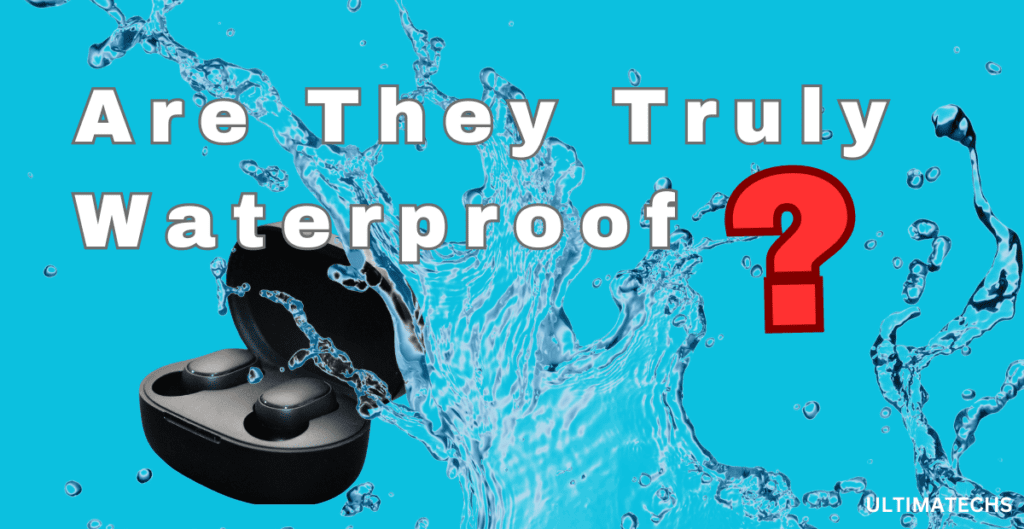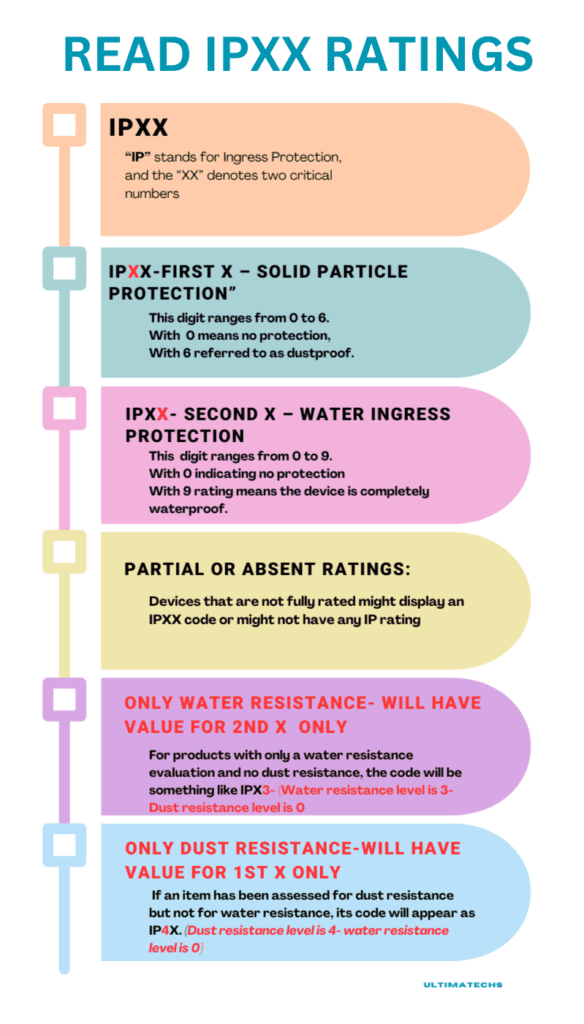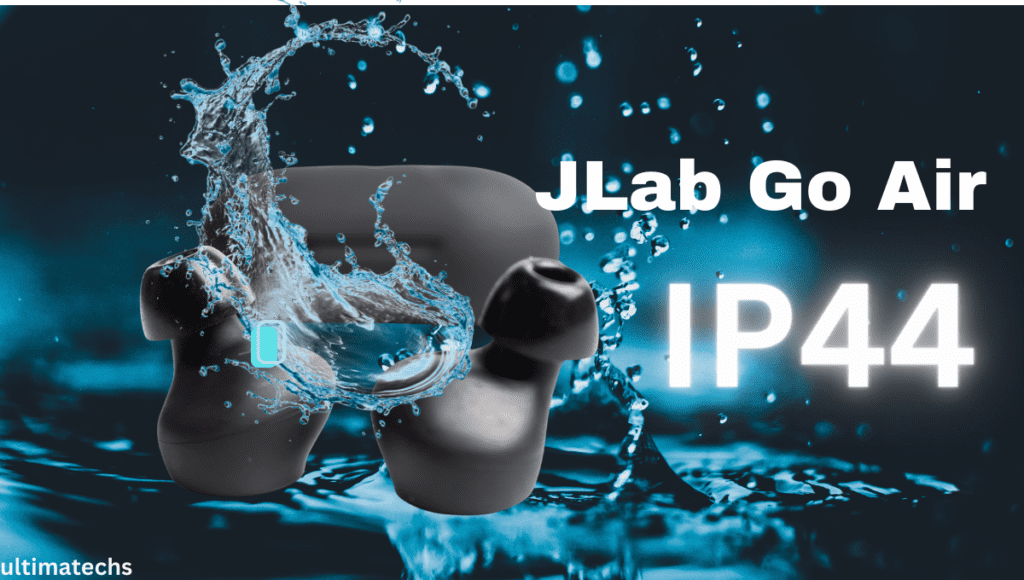
The JLAB Go Air earbuds boast an IP rating of IP44. they are water resistant but not waterproof
From what I’ve observed, there’s a widespread interest in the waterproof abilities of earbuds, particularly for models such as the JLAB Go Air.
It’s important to understand the terms like IP ratings, which are crucial in determining if your earbuds are merely water resistant or truly waterproof.
I’ve often found myself wondering if I could use these buds during a shower, letting the warm water cascade while I’m immersed in my favorite tunes.
The answer lies in the IP ratings.
This led me to a deep dive into how these earbuds react to water exposure.
RELATED : “EARBUD ONE SIDE NOT WORKING? JLAB FIX FAST!”
RELATED : “QUICK FIX: ONE SIDE DEAD ON BLUETOOTH EARBUDS!”
It’s essential to note that there is a difference between surviving splashes and being fully waterproof.
The possibility of using them in the shower might seem tempting, but it’s always wise to check the specific IP rating before taking that risk.
YOU MAY ALSO LIKE: GET CONNECTED: FIX JLAB EARBUDS NOT PAIRING TOGETHER
Key Takeaways
About IP Ratings
When selecting a gadget like the JLab Go earbuds, it’s essential to know and read about the IP rating – a decisive factor in determining water and dust resistance capabilities.
IP, or Ingress Protection, is a code established by the International Electrotechnical Commission (IEC).
It signifies how well a device can sustain or resist the entering and penetrating of objects, dust, and water.
This rating empowers users of electronic devices to understand the level of resistance offered against solids and water in different circumstances.
Knowing the IP rating is often the answer to whether earbuds like the JLab Go are truly waterproof under certain conditions.
Unveiling the Distinction: Waterproof vs. Water-Resistant Earbuds
Understanding the difference between water-resistant and waterproof earbuds is crucial, especially when deciding which pair to get.
Water-resistant earbuds can sustain contact with water to a certain extent, like splashes or jets for short periods without damage, thanks to a protective coating.
However, Waterproof earbuds take it a step further. They can be safely submerged, ideal for activities like swimming or showering, and are generally more durable.
But it’s important to note that even waterproof mechanisms can fail over time.
Always read the manufacturer’s recommendations and note the IP ratings before exposing your earbuds to water. This knowledge is vital in ensuring the longevity and functionality of your earbuds.
How To Read IP Ratings?
When it comes to understanding IP ratings, the format IPXX is a universal code used to interpret the Ingress Protection against solid particles and water
- Decoding IPXX: “IP” stands for Ingress Protection, and the “XX” denotes two critical numbers.
- First X – Solid Particle Protection: This digit ranges from 0 to 6, indicating a gadget’s capability to block solid particles and prevent accidental contact. A rating of 0 means no protection, while 6 signifies complete protection, often referred to as dustproof.
- Second X – Water Ingress Protection: This number varies from 0 to 9, reflecting how well the device can keep water out. It considers various scenarios, including water exposure at different angles, pressures, and temperatures, with 0 indicating no protection and 9 signifying high-level water resistance under various conditions.
The IEC conducts tests on electronic devices to assign an IP code, which manufacturers must finance to obtain.
To reduce expenses, some manufacturers may opt not to secure an IP rating or only go for a partial rating.
Partial or Absent Ratings: Devices that are not fully rated might display an IPXX code or might not have any IP rating.
Water resistance Without Dust Resistance : For products with only a water resistance evaluation and no dust resistance, the code will be something like IPX3.
Dust Rating without Water Resistance: Conversely, if an item has been assessed for dust resistance but not for water resistance, its code will appear as IP4X.

Breakdown Of “IP CODES“
Here’s an explanation of the numerical values associated with dust and water ingress protection ratings.
IP CODES FOR DUST RESISTANCE
- IP0X Rating: Devices with this classification offer no defense against the intrusion of solid matter.
- IP1X Standard: Equipment rated at IP1X can’t block solid objects smaller than 50 millimeters. While dust penetration is possible, larger objects, such as hands, can’t reach the internal parts.
- IP2X Protection Level: Gadgets with an IP2X rating prevent objects larger than 12.5 millimeters from entering. This means while fingers are too large to penetrate, smaller particles might still infiltrate the device.
- IP3X Guard: Devices with an IP3X rating allow entry of solids smaller than 2.5mm, safeguarding against larger objects.
- IP4X Specification: Electronics with this tag are shielded against solid elements larger than one millimeter, like wires, but not against finer particles.
- IP5X Capacity: Devices under this category are not entirely immune to dust but can endure dusty surroundings for a duration of two to eight hours.
- IP6X Assurance: This highest dust resistance rating indicates complete protection against dust ingress, ensuring no particles can reach the internal components.
IP Rating for “Water Resistance”
The IP ratings for water resistance play a pivotal role in how we measure a product’s durability against water.
This scale considers various factors like the diameters, intensity, and pressure of water, as well as the angle at which the water hits the electronic gadget.
These ratings are vital as they indicate how well products can withstand being dipped in water for specific durations.
Understanding these ratings is essential when choosing devices like earbuds, as it helps gauge their resilience in different water exposure scenarios.
IPX0 Classification: Devices with an IPX0 rating lack any water protection, necessitating a strictly dry environment to avoid damage from moisture.
IPX1 Rating: Gadgets achieving an IPX1 standard can handle light rain and condensation, especially when positioned upright, a capability common in most devices.
IPX2 Standard: With the capacity to endure light rain falling vertically at a 15-degree angle, IPX2-rated devices can resist minimal moisture like sweat, but immersion in water poses a risk.
IPX3 Protection: Devices under the IPX3 category can withstand direct water spray when tilted up to 60 degrees.
IPX4 Resilience: Electronics with IPX4 certification are equipped to deal with water splashes from any direction.
IPX5 Capability: This rating denotes the ability of gadgets to withstand low-pressure water jets, making them ideal for outdoor usage, such as withstanding squirt guns.
IPX6 Assurance: An IPX6 rating implies that the device can endure stronger water jets from various angles.
IPX7 Protection: Electronics with this rating can be safely submerged in water up to one meter deep for a maximum duration of thirty minutes.
IPX8 Standard: Items with an IPX8 rating have a higher level of submersion capability, typically up to three meters, as specified by the manufacturer.
IPX9 Classification: Rarely applicable to earbuds, the IPX9 rating is reserved for devices that need to withstand steam cleaning and high-pressure, high-temperature water jets.
Combined Ratings: Some devices, indicated as IPX6/IPX7, have been tested against both water jets and submersion, highlighting varying levels of water resistance.
Understanding IP Ratings: Recognizing these IP ratings aids in comprehending the water resistance quality of JLAB Go earbuds, facilitating comparisons with other brands and models for informed purchasing decisions.
Decoding the IP Rating of JLab Go Air Earbuds
The JLAB Go Air earbuds, as per the technical specifications on the JLAB website, boast an IP rating of IP44.
This means they are protected against solid particles as small as one-millimeter diameter – approximately 0.4 inches.
It’s effective against thin objects like a wire, ensuring no harm comes to the internal components of the buds.

JLab Go Air Earbuds are water resistant, not waterproof
The water resistance rating of 4 implies these earbuds can sustain being splashed or sprayed with water from any angle, although they cannot withstand being hit by water jets of even low intensity.
This rating is pivotal in understanding the limitations and capabilities of these earbuds in different environments.
Assess the Shower Suitability of JLab Go Air Earbuds
Deciding whether to wear the JLAB Go Air earbuds in the shower involves understanding their limitations against being soaked in water.
While they can survive splashes, but their is significant risk of damage from prolonged exposure to water remains.
As a consolation, these earbuds are ideal for working out or a day at the beach, where grains of sand of size 0.0625 to 2 millimeters won't harm them.
Their design protects against solids larger than 1mm, but the chance of them surviving when submerged is slim. It’s safer to leave them at home or in your car when planning to shower.
Beach Compatibility of JLab GO Air Earbuds
Taking your JLab GO Air to the beach?
These earbuds are designed to protect against solids larger than 1mm, effectively handling grains of sand of size ranging from 0.0625 (1/16) to 2 millimeters.
While the chance of them getting sand inside is minimal, caution should be exercised when near water.
Although they can withstand splashes, they are not designed to be submerged.
So, wear them for a beach day with peace of mind, but remember to leave them in a safe place like your home or car when planning to swim or participate in water activities
Sweat Resistance of JLab GO Air During Workouts
For those wondering if the JLab GO Air earbuds are sweat-resistant during a workout, the answer is yes.
These earbuds are designed to resist sweat, preventing any harm to their functionality.
However, it’s advisable to clean them after each use, as sweat and earwax can accumulate and potentially clog the holes over time, affecting audio quality and longevity.
YOU MAY ALSO LIKE :JLAB EARBUDS NOT CHARGING
YOU MAY ALSO LIKE: JLAB EARBUDS: FAST PAIRING STEPS
Precautions with JLab GO Air Earbuds
When it comes to the JLAB GO Air, it’s clear that there are certain things you should avoid. While they offer a degree of resistance to elements, showering with them is not recommended.
The earbuds may handle a day at the beach, but staying away from direct contact with water or sand is a safe practice.
These precautions help maintain their longevity and performance.
Maintaining Sound Quality
Cleaning your JLAB Go Air earbuds is essential, especially since ear wax and other buildup in the holes can lead to a loss of sound quality.
On a regular basis, gently use a disinfecting wipe to clean the exterior.
A toothpick can be carefully used to remove any buildup in individual holes. Ensure they are completely dry before placing them back in their case.
This maintenance helps in preserving their performance and longevity.
Frequently Asked Questions
Question: Can you wear JLAB Go Air earbuds in the shower?
No. Wearing JLAB Go Air earbuds in the shower is risky as they are not fully waterproof. They’re suitable for working out or drizzling conditions, able to sustain splashes but cannot withstand being soaked.
Question: Can you swim with JLAB earbuds?
The answer to whether you can swim with JLAB earbuds lies in their inability to be safely submerged in water. They do not qualify as swim-friendly earbuds.
TO WRAP IT UP
It’s established that JLAB Go Air earbuds are not waterproof but water resistant. They’re not suited for the shower or swim, but ideal for the gym or outside activities in lightly drizzling weather. ‘Always keep them dry before storing in their charging case. For more on their properties, consult the support website or user manual.
IPX7-Earbuds Water test



Awsome info and straight to the point. I am not sure if this is really the best place
to ask but do you people have any thoughts on where to employ some professional writers?
Thanks in advance 🙂 Escape room lista
Very interesting information!Perfect just what I was looking for!!